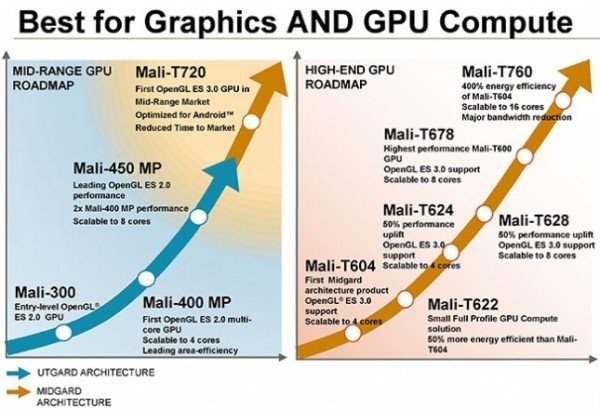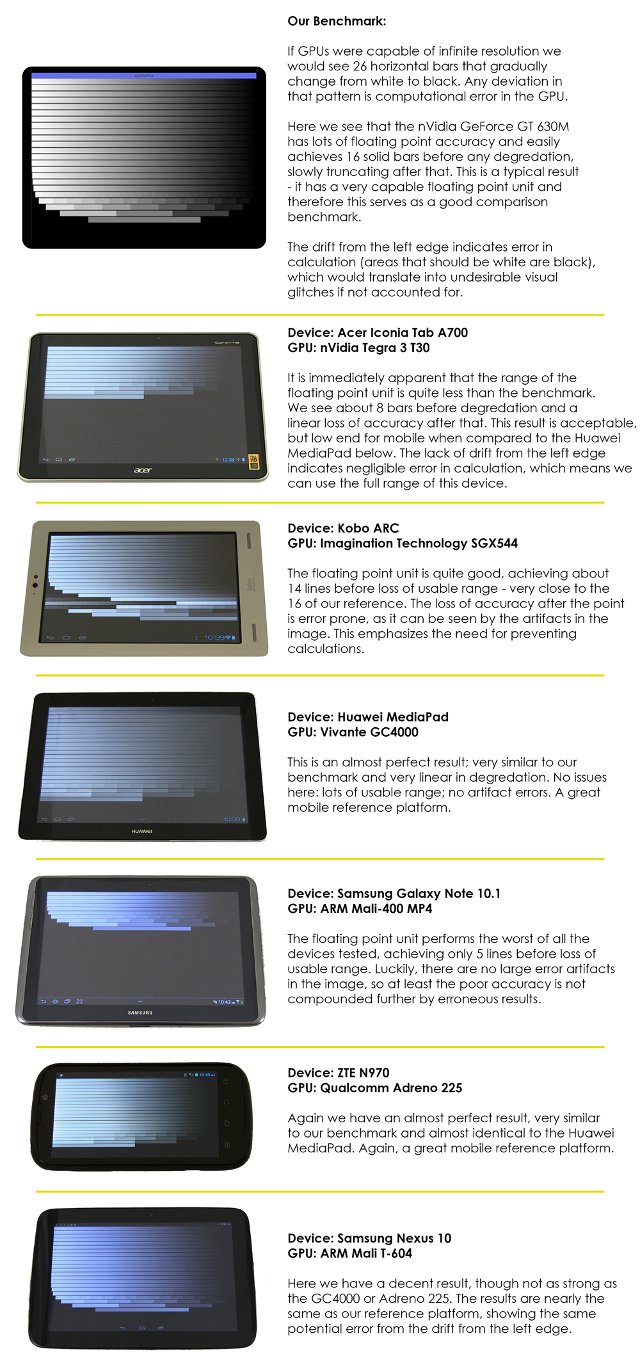Since the announcement of ARM Mali-T604 in 2010, ARM has explained that GPGPU (General Purpose computing on GPU), aka GPU Compute, would be one of the key features of their new Mali graphics processor, and the company now expects GPGPU to become mainstream in embedded and mobile devices in 2014 and beyond. I’ve just come across a presentation by Roberto Mijat, technical marketing manager at ARM, entitled “Unleashing the benefits of GPU Computing with ARM Mali” which shows practical applications and use cases where the use of RenderScript, or OpenCL can make massive performance improvements, at much lower power consumption, over the same parallel tasks processed by the CPU only. Let’s have a look at some of the most interesting slides. GPU compute can be used for multiple applications in mobile, multimedia, and automotive sectors. GPU Compute for H.265 / HEVC HEVC aka H.265 is the next generation codec providing […]
Linux Kernel 3.12 Released
Linus Torvalds has announced the release of Linux Kernel 3.12: I was vacillating whether to do an rc8 or just cut the final 3.12, but since the biggest reason to *not* do a final release was not so much the state of the code, as simply the fact that I’ll be traveling with very bad internet connection next week, I didn’t really want to delay the release. Sure, we had a number of driver reverts, and there was an annoying auto-NUMA memory corruption fix series, but none of it was really worth delaying 3.12 for. But the fact that I’m going to be (effectively) off-line next week means that I’m *not* opening the merge window for 3.13 yet – since I won’t have the bandwidth to really do merges anyway. That doesn’t mean that you can’t send me pull request for the merge window early, of course – maintainers can […]
ARM Unveils Mali-T720 and Mali-T760 GPUs
ARM has recently announced two new Mali GPUs: Mali-T760 for high-end smartphones and tablets, and Mali-T720 for entry-level devices, but with better performance and energy performance compared to previous cost-optimized Mali GPUs, as well as OpenGL ES 3.0 support. These new GPUs have already been licensed by companies such as MediaTek, Rockchip, Samsung and LG Electronics. Mali-T760 GPU ARM lists the key benefits and features of the ARM Mali-T760 GPU as follows: An increase in energy efficiency and performance of approximately 400 percent over the ARM Mali-T604 GPU; Scaling to 16 shader cores, which doubles the previous generation, plus an increase in both performance per shader core and overall performance; Reduction of internal and SoC bandwidth utilization, significantly reducing energy consumption, enabled by ARM Frame Buffer Compression (AFBC), and Smart Composition, delivering more than 50 percent reduction in total memory bandwidth utilization; Simplified implementation through reduced wire count and […]
ARM TechCon 2013 Schedule – ARM Servers, Internet of Things, Multicore, Hardware and Software Optimization and More
ARM Technology Conference (TechCon) 2013 will take place on October 29 – 31, 2013, in Santa Clara, and the detailed schedule for the event has just been made available. In the previous years, the conference was divided into Chip Designs day (1 day), and the other 2 days were reserved for Software & System Design, but this year it does not appear to be the case. Whether you’ll be able to attend the event or not, it’s worth having a look at what will be discussed there in order to have a better understanding of what will be the key ARM developments in the near future in terms of hardware and software. There will be around 90 sessions categorized into 15 tracks: Accelerating Hardware Development – This track explores the resources, tools, and techniques that designers can employ to quickly bring hardware to market. Topics include multicore design, ARM IP, […]
Rockchip SoCs Comparison Table, RK32xx Quad Core Cortex A12 Coming Up in 2014
They guys at Linux Rockchip have setup a comparison table between Rockchip processors, but it’s not quite complete yet, and Rockchip noticed it, so they’ve just sent them the most recent Company Presentation that provides more details, including a roadmap. In this documentation, we can see the company targets different types of products with their SoCs: Android OTT dongle/box (aka mini PC, HDMI TV dongles…) – RK2928, RK3066, RK3068, and RK3188 Tablets – RK2926, RK2928, RK3028, RK3066, RK3168, and RK3188 EPD E-Book – RK2818, RK2906 and RK2918 MP3 player – RKnanoC On page 12 of the presentation, they have a convenient comparison table for the SoC used in mini PCs and Tablets. Series RK2926 /RK2928 RK3066 /RK3068 RK3168 RK3188 Process 55nm 40nm 28nm HKGM 28nm HKGM CPU Cortex A9 Dual Cortex A9 Dual Cortex A9 Quad Cortex A9 MAX CPU Frequency 1.0 GHz 1.6 GHz 1.2 GHz 1.6 GHz L1 […]
Google Releases Android 4.3 Jelly Bean, Unveils New Nexus 7 Tablet
Yesterday was a big day for Google with several important announcements, including the Chromecast HDMI TV dongle, an updated version of Nexus 7 tablet, and the release of Android 4.3, still codenamed Jelly Bean. In this post, I’ll start with the hardware, and move to explain what’s new with Android 4.3, and where you can download source and images for your device. New Nexus 7 The new Nexus 7 tablet will run Android 4.3 on the following hardware: SoC – Qualcomm Snapdragon S4 quad-core processor @ 1.5GHz with Adreno 320 GPU @ 400MHz System Memory – 2GB RAM Storage – 16GB to 32GB of storage Display – 7″ IPS display (1920 x 1200) Connectivity – Dual band 802.11a/b/g/n WiFi (2.4G/5G), Bluetooth 4.0, and NFC Camera – 5MP rear camera and 1.2MP front camera Video Output – HDMI output (via SlimPort) Audio – Stereo speakers, 3.5mm headphone jack, microphone USB – […]
ARM Announces Cortex-A12 processor, Mali-T622 GPU and Mali-V500 VPU
Right before Computer 2013, ARM has made a single announcement for 4 new products for smartphones: Cortex A12 core, Mali-T622 GPU, Mali-V500 video processor unit, and POP IP technology. Cortex A12 processor, with 40 percent more performance than Cortex-A9, positions itself between Cortex A9 and A15 offerings, and brings virtualization, big.LITTLE processing, and up to 1TB addressable memory to mid-range devices. Combined with the new Mali-T622 GPU, it will offer GPU Compute and OpenGL 3.0 solution. Add the new Mali-V500 video IP solution to complete the SoC for tomorrow’s, 2015 more exactly, mid-range smartphones and tablets between $200 and $350. Cortex A12 will have the following key features: Architecture – ARMv7-A Cortex Multicore – 1-4X SMP within a single processor cluster Multiple coherent processor clusters through AMBA 4 technology Support ARM Thumb-2 TrustZone security technology NEON Advanced SIMD DSP & SIMD extensions VFPv4 Floating point Hardware virtualization support Large Physical […]
Vivante GC4000 is The Best Mobile GPU… When It Comes to Accuracy
Most of the time, mobile GPU comparisons involve benchmarks such as Antutu, Nenamark 2, etc…, or people may consider which games will be able to run smoothly with a particular device, but we seldom compare image quality, for the simple reason it’s usually more difficult to achieve. YOUi Labs has just done that, however, by running the shader code below on several hardware platforms, mainly Android tablets, with the most common mobile GPUs, and used the results obtained with a Desktop PC GPU, Nvidia Geforce GT 630M, has a reference.
|
1 2 3 4 5 6 7 8 9 10 11 12 13 14 |
precision highp float; uniform vec2 resolution; void main( void ) { float x = ( 1.0 – ( gl_FragCoord.x / resolution.x )); float y = ( gl_FragCoord.y / resolution.y ) * 26.0; float yp = pow( 2.0, floor(y) ); float fade = fract( yp + fract(x) ); if(fract(y) < 0.9) gl_FragColor = vec4( vec3( fade ), 1.0 ); else gl_FragColor = vec4( 0.0 ); } |
Here are the results: The worst GPUs are Mali-400 MP4 in Exynos 4412 and Geforce ULP in Tegra 3, which can respectively only show 5 and 8 lines before degradation, and the top two GPUs are Qualcomm Adreno 225 in MSM8660A, and Vivante GC4000 in HiSilicon K3V2 processor. Imagination Technologies SGX544 and ARM Mali-T604 also provide decent results, but […]










